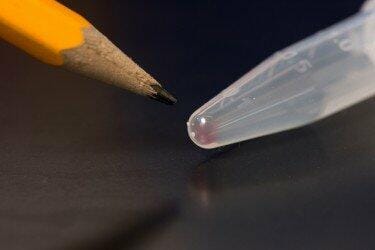Digital Images Can Be Stored in DNA


Data from 600 smartphones stored in a drop of DNA. Credit: Tara Brown Photography/ University of Washington.
Researchers from the University of Washington (UW) and Microsoft have developed a new system to store data in DNA and retrieve it without error or information loss. The findings were communicated in a paper presented at the ACM International Conference on Architectural Support for Programming Languages and Operating Systems. The UW team encoded the digital data corresponding to image and video files into newly synthesized DNA molecules. Later, they retrieved the sequences from a vast DNA pool and reconstructed the original documents.
Total digital data is expected to reach 44 trillion gigabytes by 2020. The capacity to produce new data surpasses the ability to store it by current means. Besides, hard drives, optical and magnetic storage devices degrade relatively quickly. DNA, on the other hand, is extremely durable, and it’s millions of times more compact than other storage technologies. Given the world’s pressing needs for a better way to store data, the computer scientists and electrical engineers from Microsoft and UW decided to build a DNA-based storage system.
Fragmenting the documents in tiny DNA molecules and retrieving them with zip codes
First, the researchers developed a system to transform the ones and zeros that encode digital information in the four letters of the genome (A, G, T, C) in an efficient way. Later, they synthesized a vast number of small DNA fragments, each containing a piece of the information to be stored. These segments can be stored for hundreds of years.
To retrieve the information, the researchers used a tagging system based on “zip codes” and “street addresses”. First, they amplified the DNA labeled with the zip code that corresponds to the data they wanted to retrieve. Afterwards, they sequenced the amplified DNA to reveal the encoded information. The street addresses are then used to order the DNA fragments and thus reconstruct the document.
The DNA storage system is a promising tool for long-term data storage whose viability will depend on the costs of large-scale DNA synthesis and sequencing.
Source: UW Today

